The family of Mr. Luu Van Duc and Mrs. Le Thi Huong (Hamlet 10, Hoa Ninh Commune, Di Linh District, Lam Dong) is raising Minh Du chickens, a traditional breed of chicken with firm meat and large weight. Mr. Luu Van Duc said that his family's Minh Du chickens are raised in a closed model, in cages covered with rice husks.
The family of Mr. Luu Van Duc and Mrs. Le Thi Huong (Hamlet 10, Hoa Ninh Commune, Di Linh District, Lam Dong) is raising Minh Du chickens, a traditional breed of chicken with firm meat and large weight. Mr. Luu Van Duc said that his family's Minh Du chickens are raised in a closed model, in cages covered with rice husks. Minh Du chickens eat very easily; bran, vegetables, corn kernels, bananas, banana stems, etc. are all eaten and absorbed well by the chickens.
As a breed of chicken with the advantage of growing quickly, when first bought, the chickens are only one day old. After "brooding" the chickens and raising them in a small cage with lights for 10-15 days depending on the weather, the grandparents can let the chickens out to raise directly on the floor covered with rice husks. In addition to normal food, Mr. Duc also feeds the chickens a special food, which is calcium worms and black soldier fly larvae.
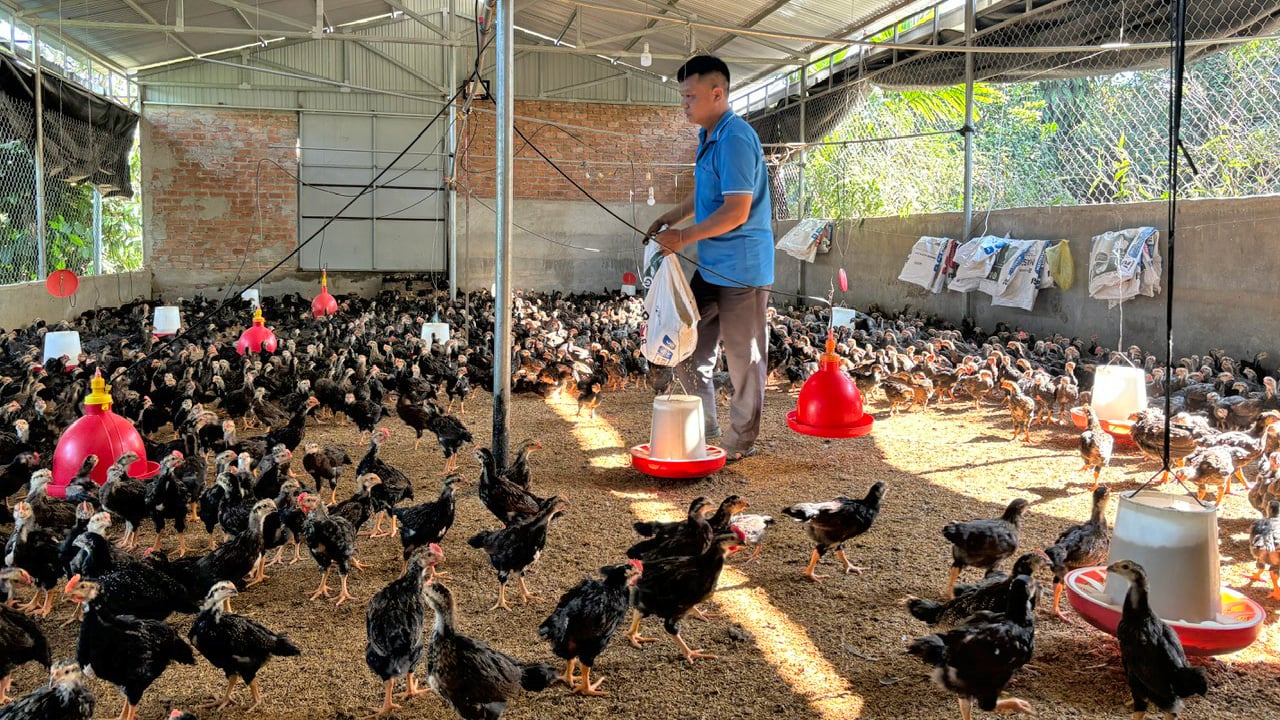
Mr. Luu Van Duc raises chickens on a rice husk floor.
Mr. Luu Van Duc shared: “Raising black soldier flies is also simple, and you can get a lot of calcium worms to feed the chickens. Eating calcium worms makes the chickens healthy and their meat fragrant. However, you cannot always feed the chickens worms, but there must be a limit. Like my family, we feed the chickens worms about two to three times a week. This amount of calcium is a very good supplement for the chickens, helping them grow very quickly.”
According to Mr. Luu Van Duc, raising calcium worms is quite simple, only needing food and leftovers from family meals. The parent soldier flies are raised in a closed mosquito net, then they will lay eggs, which hatch into larvae. During the development process, the larvae reach a large weight and are very suitable for raising poultry such as chickens.
At this stage, the larvae consume a large amount of food, including chicken manure. In addition, Mr. Luu Van Duc also uses EM disinfectant to spray on the rice husk layer, reducing odor in the chicken coop. The deodorizing enzyme helps quickly decompose chicken waste, keeping the coop clean, odorless, not humid, the chickens warm, and not suffering from lung disease.
After a period of raising, when the chickens reach the age of selling, the rice husks can also be used to fertilize plants or continue to compost to decompose, used as an effective organic fertilizer.
The family of Mr. Luu Van Duc and Mrs. Le Thi Huong is one of the households participating in the Circulating Chicken Farming Model using black soldier fly larvae in Di Linh district.
Ms. Nguyen Thi Kim Yen, an officer of Di Linh Agricultural Center, said that as a purely agricultural district, livestock farming is also a direction for farmers to develop production. Chicken is a traditional livestock, however, farmers also face many pressures from livestock farming such as: high feed prices, chickens often get sick, market prices go up and down, waste causes odor, and pollutes the living environment.
With the goal of supporting farmers in developing sustainable livestock farming, overcoming livestock waste sources that pollute the environment, and reducing input costs, Di Linh Agricultural Center has implemented a model of circular chicken farming using black soldier fly larvae as chicken feed and treating poultry waste, guiding farmers in raising livestock in the direction of biosafety and livestock processes towards circular agriculture.
“The center has supported the implementation of 7 models of free-range chicken farming, with a scale of 500 chickens per model, with the state funding supporting nearly 58% and households contributing 42%. A total of 3,500 chickens were delivered to 7 households in the communes of Hoa Ninh, Dinh Trang Hoa, Lien Dam, Bao Thuan and Gia Hiep. Technical staff also came to guide, train and educate people very carefully on black soldier fly farming techniques, using flies to treat poultry manure as well as leftover food,” said Ms. Kim Yen.
It is known that after 3 months of raising, all 7 participating households evaluated the model as very successful. Farmers began to get used to raising black soldier flies, using calcium worms to feed chickens and at the same time feeding worms to waste from chickens, vegetables, grass, fruits, etc., helping to solve a large amount of organic waste.
This amount of waste, after being digested by worms, will produce an odorless, loose organic fertilizer that can be very good for plants. After 90 days of raising, the survival rate of chickens is high at 92%, the average weight of chickens is 2.45 kg/chicken, which is a very good standard weight. In particular, due to the addition of calcium worms with high nutritional content, the chickens are very healthy, with crispy meat.
Ms. Nguyen Thi Kim Yen emphasized: “The important thing is that we have guided and started to build awareness of saving inputs for farmers. Up to now, people are still used to looking at selling prices, but in fact, saving inputs also contributes greatly to increasing income for households. Raising black soldier flies not only reduces odor, protects the environment, but also reduces the cost of chicken feed, many households have realized the effectiveness of circular farming.”
According to Ms. Yen, raising black soldier flies to treat poultry and livestock waste, providing a nutritious food source for poultry and fish is a sustainable development direction for many remote farmers, supported and widely disseminated by the Department of Agriculture.
Source: https://danviet.vn/cung-la-nuoi-ga-nong-dan-lam-dong-cho-an-mot-thu-au-trung-ga-thit-chac-lon-nhanh-chuong-sach-20250221123143943.htm








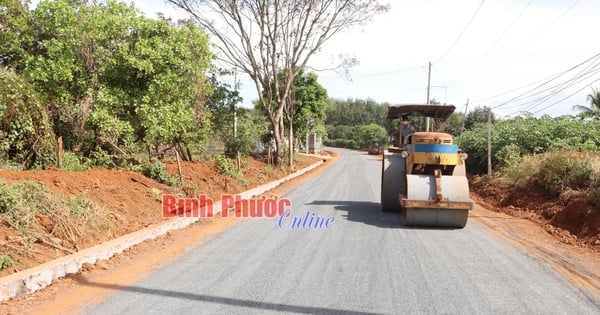
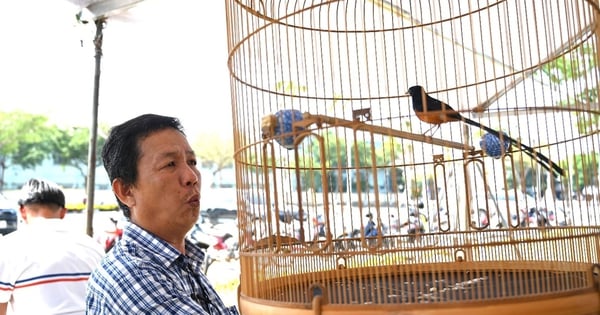

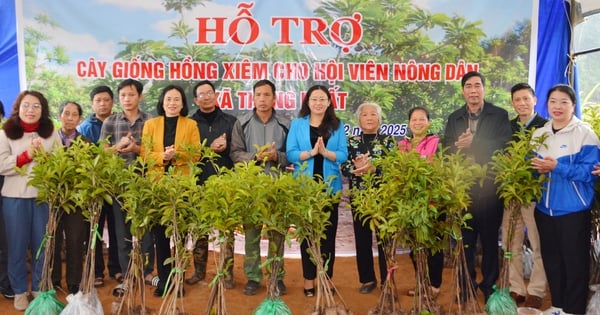
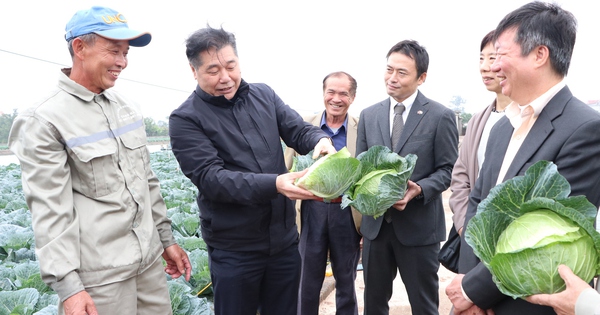


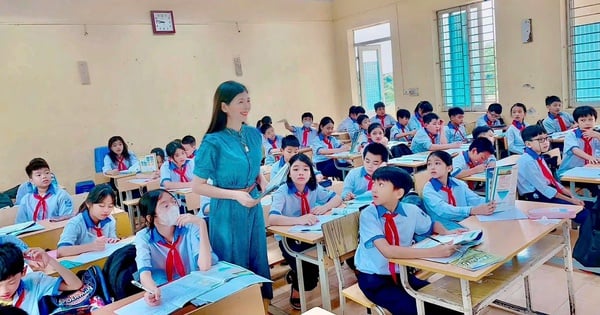










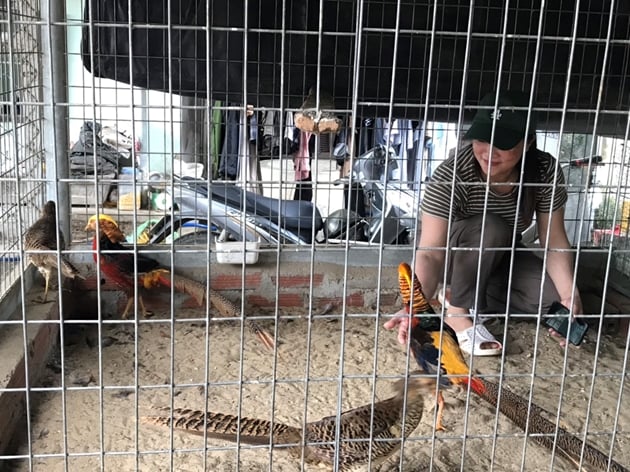


Comment (0)